Starstruck (1985) #1-6
by Elaine Lee and Michael William Kaluta
This is where modern comics started.
At least that’s what it seemed to me as a teenager. First you had Starstruck, serialised in Heavy Metal in 1982/83, and then Chaykin seemed to ape many of the storytelling techniques pioneered in the series, and then Frank Miller aped Chaykin. And, of course, Alan Moore seemed to absorb even more of the entire approach and ran with it.
Presto! Modern comics. (That is… the ones that were modern back then…)
But I say “seemed”, because I have no idea whether these people ever read Starstruck. It could have been a parallel evolution?
Or perhaps this is where modern comics started.
Some of these Epic Comics I’ve been curious to re-read to see what I think about them now, but I don’t have that problem at all with Starstruck. Because I’ve read these comics over so many incarnations that I know that it’s pure genius. I’ve probably not re-bought anything as much as I’ve re-bought Starstruck. First serialised in Heavy Metal (which the Marvel graphic novel is a reprint of, somewhat reworked), then this graphic novel and following Epic Comics series, then the “expanded universe” thing from Dark Horse, then the IDW series and graphic novel, and then the kickstarter graphic novel, and then the new IDW series.
*phew*
Of course, it’s not the same material… but there’s a lot of overlap.
Lee writes a cute introduction and namechecks Robert Altman and Thomas Pynchon, and those are exactly the right touchstones, and you can see their influence reflected in this comic.
As the text box up there says (and which is reiterated later): Illusion and allusion aren’t the same thing, but they’re central to this book. It’s all about twins and identities and stuff.
Starstruck started out as a play, and Kaluta did the poster (and the sets). I’m guessing that that’s perhaps the poster for the play?
The Altman influence is very clear in the way the creators weave dialogue and action together. There’s always a bunch of things happening at the same time.
And it’s funny and it’s emotionally affecting.
And it’s really quite nerdy. How many joke poem/riddles about quarks do you see in comics?
Like in Pynchon, scenes frequently devolve into panto, while driving the plot forward. It’s silly and it’s wonderful.
Kaluta’s artwork is gorgeous, of course, but beyond that, he’s just brilliant at conveying so much just through facial expression and posture.
There’s not a lot of post-modern funning around with the medium, but there’s some.
Starstruck is very dense. There’s a lot of information being conveyed, all the time, and there’s a gazillion characters, a lot of doubles and varying names and conspiracies, and Lee and Kaluta drops it all on the reader, hard. But the thing is, as confusing as some of these scenes initially seem, everything needed to understand them is present. They never ever hide information to make things vague or “interesting”; it’s all there if you just, like, really concentrate. Which makes for an exhausting reading experience, because you have to be a really active reader. Some people later took these storytelling techniques and used them for wider acclaim, but frequently there wasn’t much there there. Lee, on the other hand, has so much there. There’s like only there there. (Oh the erudite.) Losing faith in the narrative is the worst thing that can happen when doing this type of storytelling, and that doesn’t ever happen in Starstruck.
Oh, yeah, and there’s a glossary in every issue. Which is more like an encyclopedia, and this is where Lee gets to expound in greater depth upon everything that’s going on. You never actually need to read these to understand what’s the plot, but they bring greater depth to the book.
And that’s basically all the elements: No omniscient storyteller putting in captions to explain things to us; no “as you know Bob” between the characters; no thought balloons; a multiplicity of viewpoints… These are basically all the storytelling tricks that would later be popularised by Frank Miller and Alan Moore (who even nicked the text supplements).
Epic editor-in-chief Archie Goodwin, as usual, does cartoons on the inside front cover, but here we also get some shots from the play. And that is, I believe, Elaine Lee herself as Galatia 9?
The Epic Comic series continues straight off from the graphic novel, but is with mechanical colour seps, I think? Lee does the colouring, which is rather unusual for a writer, but does a fabulous job.
There’s some really really horrendous jokes in here, which is perfect.
Should I say anything about the plot? Uhm… Nah. The wanted poster up there explains everything.
About half? of the Epic Comics series is about the guy with the helmet up there, and in his sections we shift to this hard-boiled kind of narration. He’s doing an investigation, see?
Leap!
NO THERE ISN”T>
I think that conversation just about sums it up.
But it makes sense in context!
Romance is in the air.
Oh, wow. That has to be Bruscilla the Muscle from the play, which means that it’s Susan Norfleet Lee (who is Elaine Lee’s sister, I think).
*gasp* An omniscient caption! Which is a joke, naturally.
For the final two issues, Steve Oliff took over the colouring job. He’s a really good colourist, but I think Lee was better suited here, really. It’s a bit too busy and gets muddy here and there.
I should have gotten that t-shirt at the time.
And then, after just six issues, it’s over. They did do some Galactic Girl Guide backups for Rocketeer, but that was a doomed comic if there ever was one. Dave Stevens worked at a glacial pace, so only two issues were published with GGG in them, so it wasn’t until 1990 that Dark Horse picked up the series.
The final issue is very different from the other issues. I’m guessing they felt that they had too much to get through using their normal (and unusual) storytelling approach, so they introduce and omniscient narrator who can explain everything. (Well, the narrator is really a character in the book, so it’s a joke disguised as a cheat disguised as a joke.)
I mean, they don’t abandon everything to infodump an ending on us: The jokes and dozens of characters continue whatever they’re doing.
But it is really, really jarring to suddenly have somebody explain to us what’s happening. After such an amazing reading experience from the graphic novel and the first five issues, I have to say that this was a bit of a let-down.
They did manage to spike the landing plot-wise, though. I think there were still a couple of loose ends, and there was a couple of things that I was so puzzled about that I started going back through the previous issues to see whether I’d missed something, but no. Perhaps I should just re-read the entire thing immediately?
I should have brought the script at the time.
You can read the publishing history here, but the most important thing is that IDW has published two books collecting (in quite reworked form) most of this. The second one was financed by a Kickstarter, and Lee was most apologetic about the time it took to deliver on it. But the results were amazing and totally worth the wait. You should buy them.
Lee said in an interview in 2012:
We were supposed to do twelve books, but were told we were being cancelled after the first few were done. So we ended up shortening the story we had planned, so there would at least be some sort of an ending.
Gah! Marvel! We could have had twelve issues of this wonderful thing!
But what did the critics think?
Somebody? writes in The Comics Journal #111, page 52
Lee has re-invented Camp as a new Sen-
sibility; it isn’t Camp in the sense that it
violates all known laws of draina and inter-
nal logic for the sake Of flamboyance or
effect. Rather, she’s taken the space opera
form and, while respecting the limitations
Of physics as we now know them, pushed
the genre’s more baroque aspects to their
absolute limits. So we have a basically sound
and inviolate backdrop, against which a
perfectly sober SF plot could conceivably
be hatched, and instead we’ve got things like
the opening scene Of the third issue, in
which a supporting character—Rah El Rex—
is seen wrestling with the corporeal form of
a devil on his right shoulder (“Norris is a
dead man!… He hit me with a leg leg
LEG’) and an angel on his left CIOh, please,
Rah Ell—Norris LOVES you!”). The use Of
such an archaic storytelling gimmick in this
unlikeliest of genres—with no damage to
consistency of tone—is what makes Stap
struck so gloriously Camp. In this series, any
absurdity is possible.[…]
As for the plot action, which has be-
numbed many a mind, well, there’s a key
to that: first, it just isn’t all that important;
and second, when you figure it out, it’s
really kind of Givial. As one character, Mary
Medea, says in the third issue (admist the
destruction in flames of Rec 97’s wax
museum and the scattering-in-panic Of near-
ly all the series regulars), “There’s less going
on than meets the eye!’ That single sentence
encapsulates it. What Camp is all about is
grand flourishes, and imperial manner, wave
ing the arms wildly When a nod Of the head
will do.
R Fiore writes in The Comics Journal #96, page 34
No, no, it’s supposed to be art under a
space opera surface, not space opera under
an arty surface!
I don’t want to be dismissive when so
much talent, time, and effort went into a
project, but they again I don’t like to see
talent, time, and effort poorly spent either.
Give it its due: it looks great. Artist
Michael Kaluta must have seen in writer
Elaine Lee an imagination that would push
him past normal comic-book imagery.
Lee’s first story, “They Lie Dormant in
Some People,” has a real bite to it once you
peel back the technique. By all means get it
if you haven’t already. But for the most
,part the_stylistic gimcracks feel more like
camouflage. Lard all the allusions you want
on a space cadet story, it’s still a space cadet
story. And some of the tricks just plain
don’t work. For instance, Lee is apparently
attempting to adapt Robert Altman’s dia-
logue montages to the comics idiom. In one
Of Altman’s montages, despite their reputa-
tion for being confusing when a line is
important you hear it, and if you don’t
hear it it’s not important. Written captions
and balloons don’t give you that kind of
subtle emphasis, and the confusing text
ultimately draws attention to the pulp cone
trivances of the plot.
Then again, the trouble might just be
that I’m not particularly intrigued by Lee’s
invented world; the rest of you may find it
fascinating. Even so, I wonder why the
(traditionally) male impulses that are
mocked in the first half of the book become
admirable when evinced by women in the
second half. And didn’t anyone at Marvel
know that the word is “forsaken” and not
“forsaked?” It was on the cover of the
book; they could hardly have missed it.
You know, as a teenager I used to think that R Fiore was an insightful critic. I must have been stupider than I thought.
Kaluta responds in The Comics Journal #100, page 53
Hi. Thanks for the review of Starstruck in JotU•
496. It is space opera under an arty sur•
Gary saw the play at least Once,
right! [Right. —GG] Oh well. I’m glad the book
was read and digested. had So much fun With
it. The title has the word “forsaked” in it ’cause
it’s a quote. Its a small tip of the propeller
to Bob Dylan’s ‘Chimes of Freedom”
(called that one right!) The whole verse. fore
oldtimes sake:
“In the city’s melted furnace
Unexpectedly we watched
With faces hidden as the walls were tightning
As the echo of the wedding bells
Before the blowing rain
Dissolved into the bells of the lightning
Tolling for the rebel
Tolling for the rake
Tolling for the luckless, the abandoned and
forsaked
Tolling for the outcast burning constantly at
stake
And we gazed upon the chimes Of freedom
flashing. ”
It still gives me chills after all these years.
mn’t kick yourself, R. , Howie Chaykin missed
it, too. and he knows me so much better than
you. (Dammee did that rhyme!)
Hah!
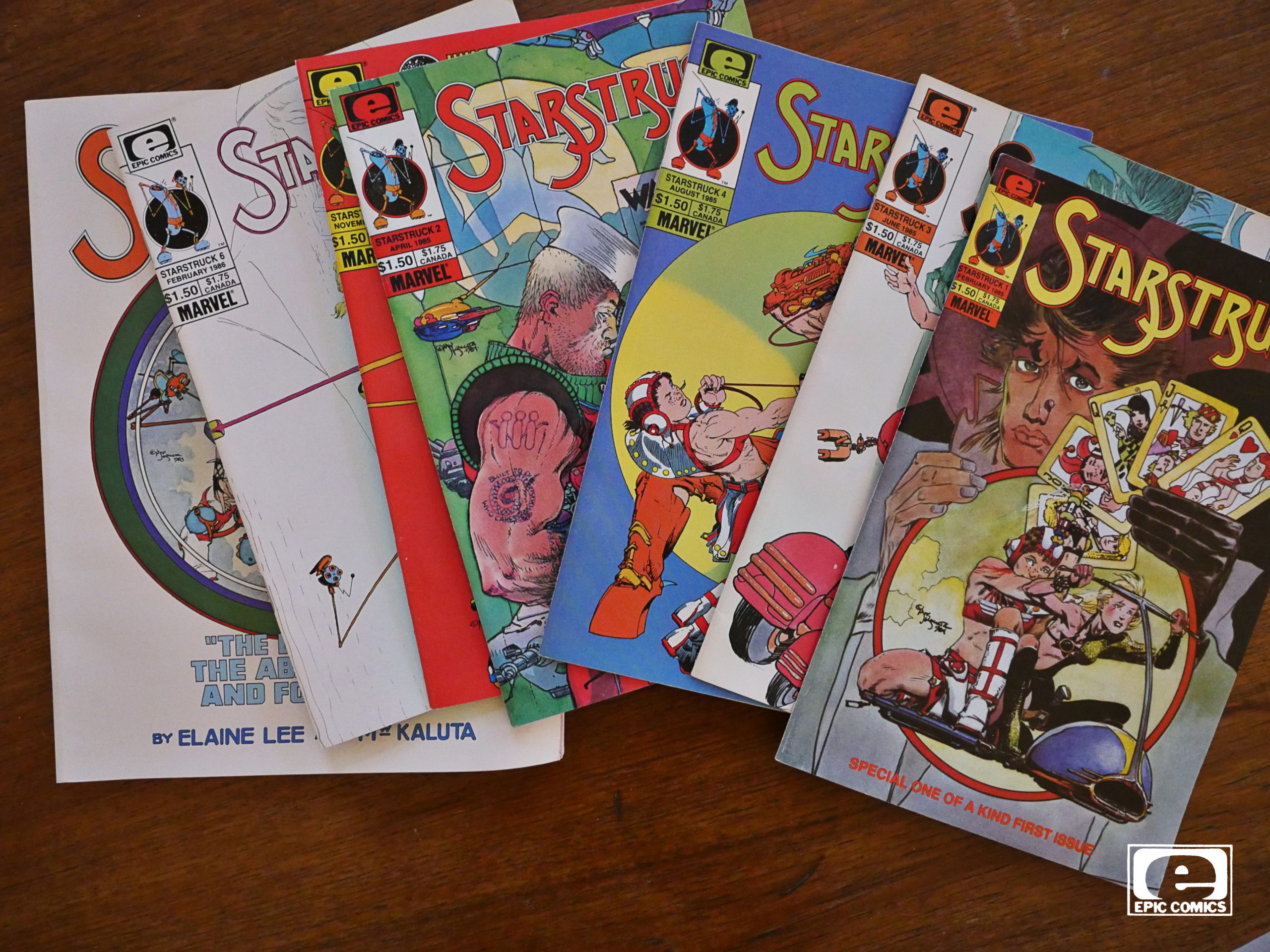
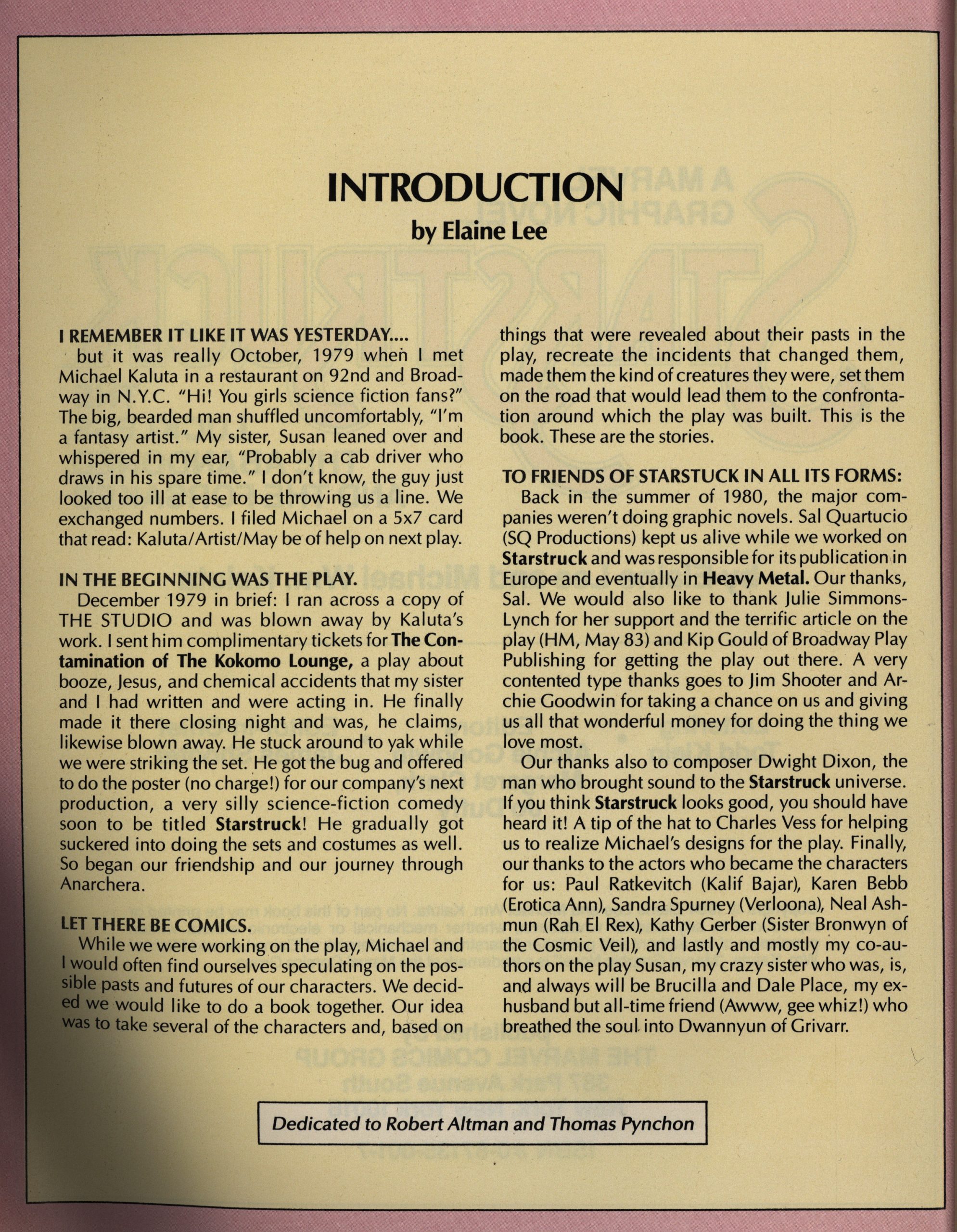
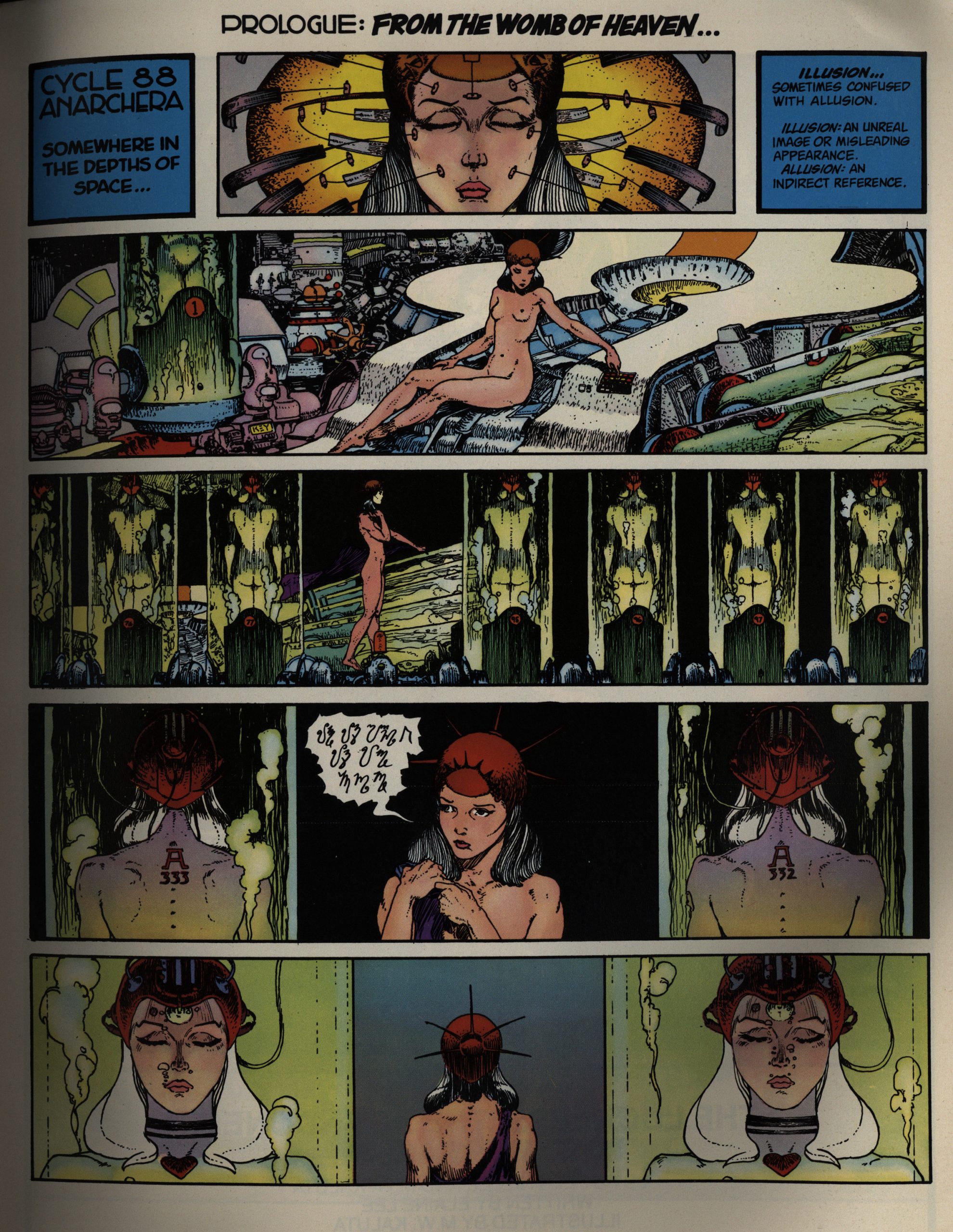
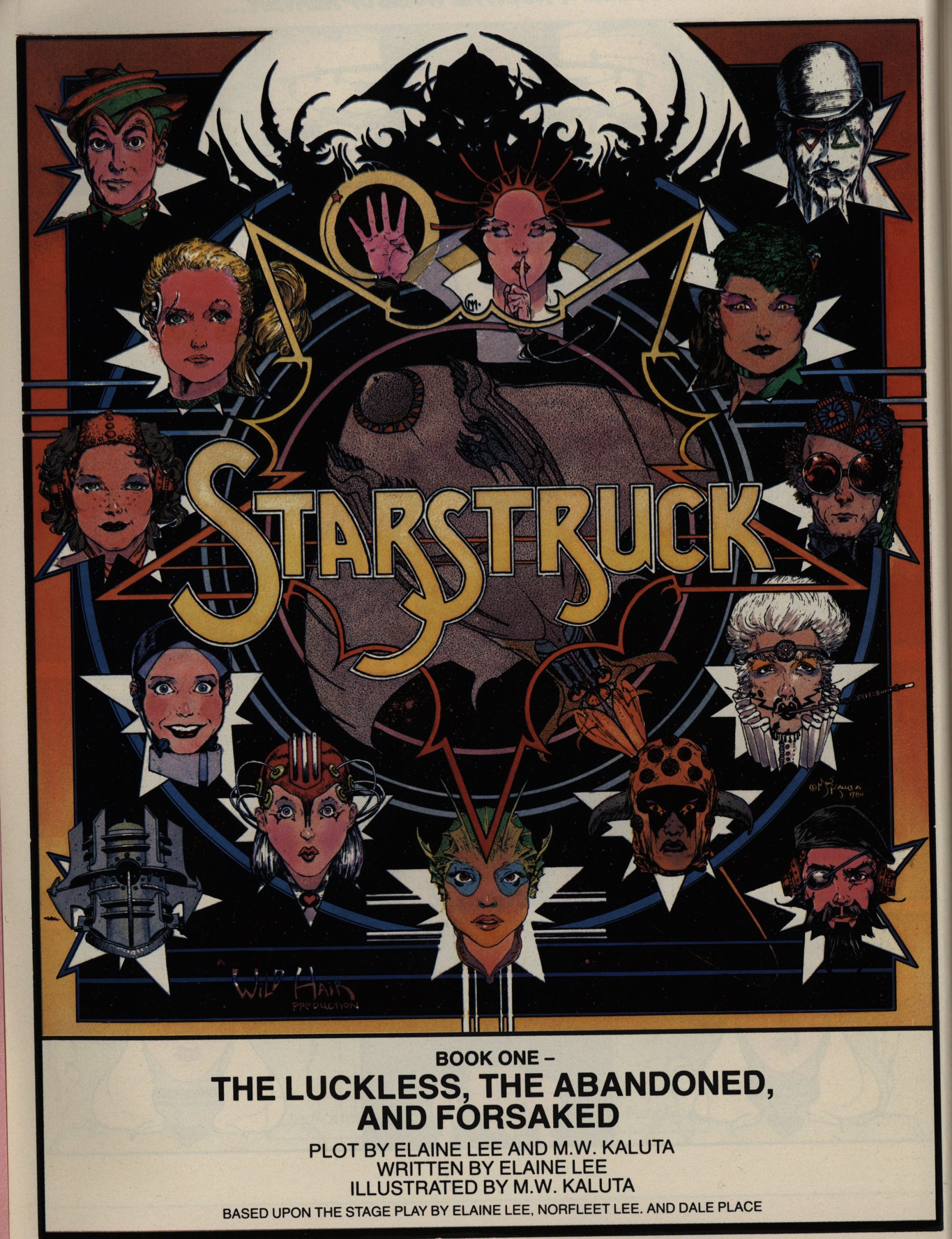
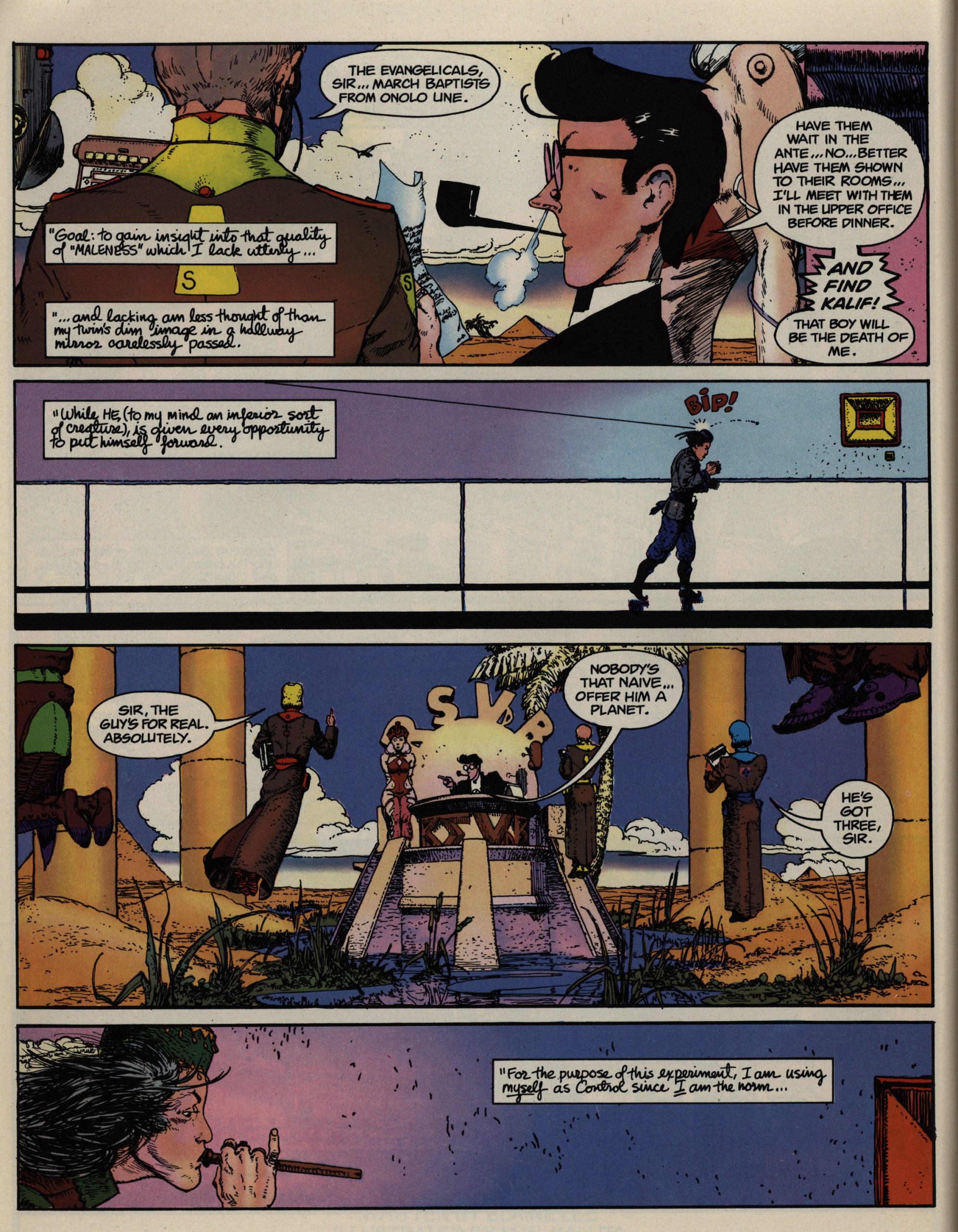
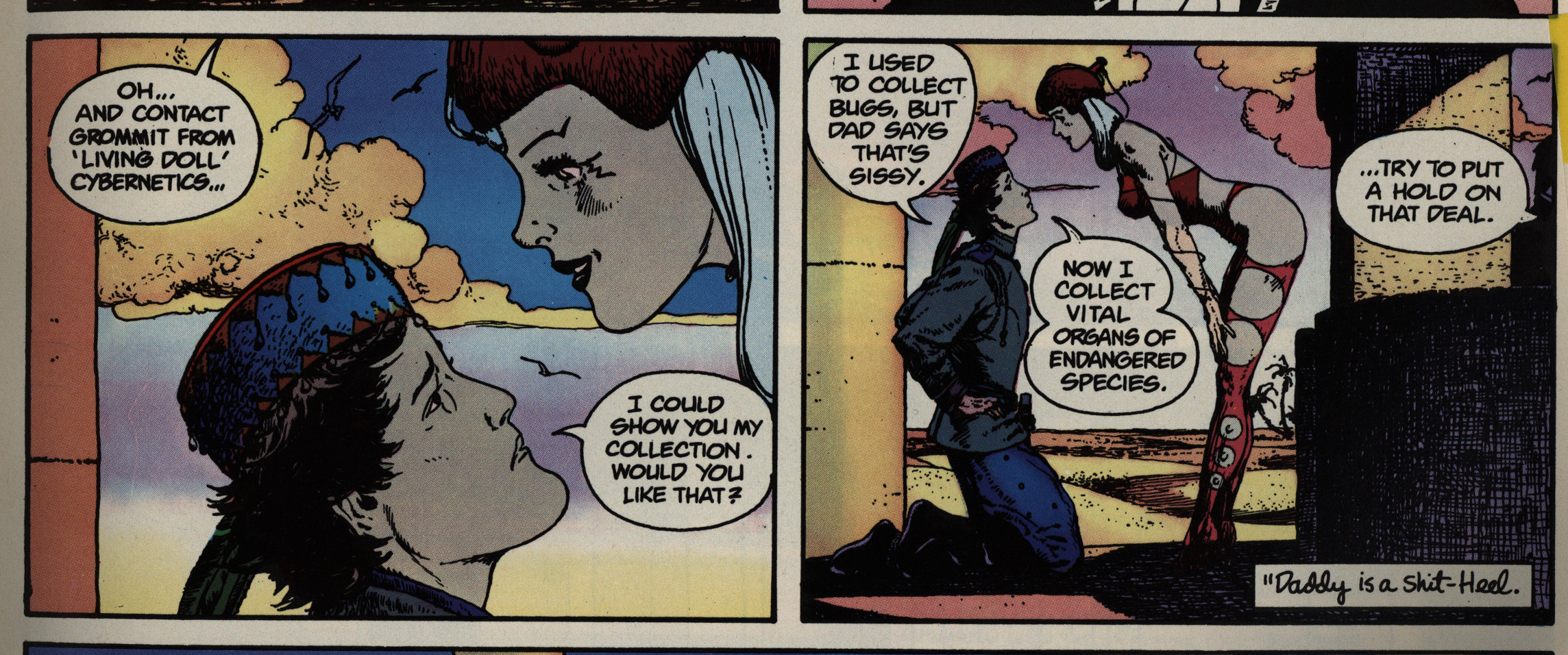
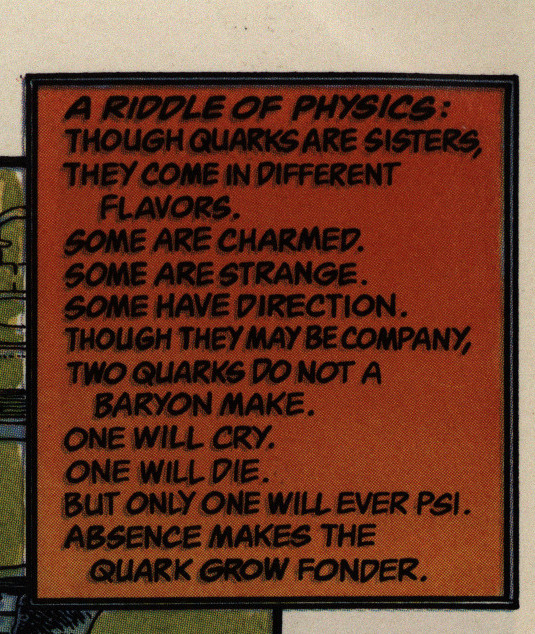
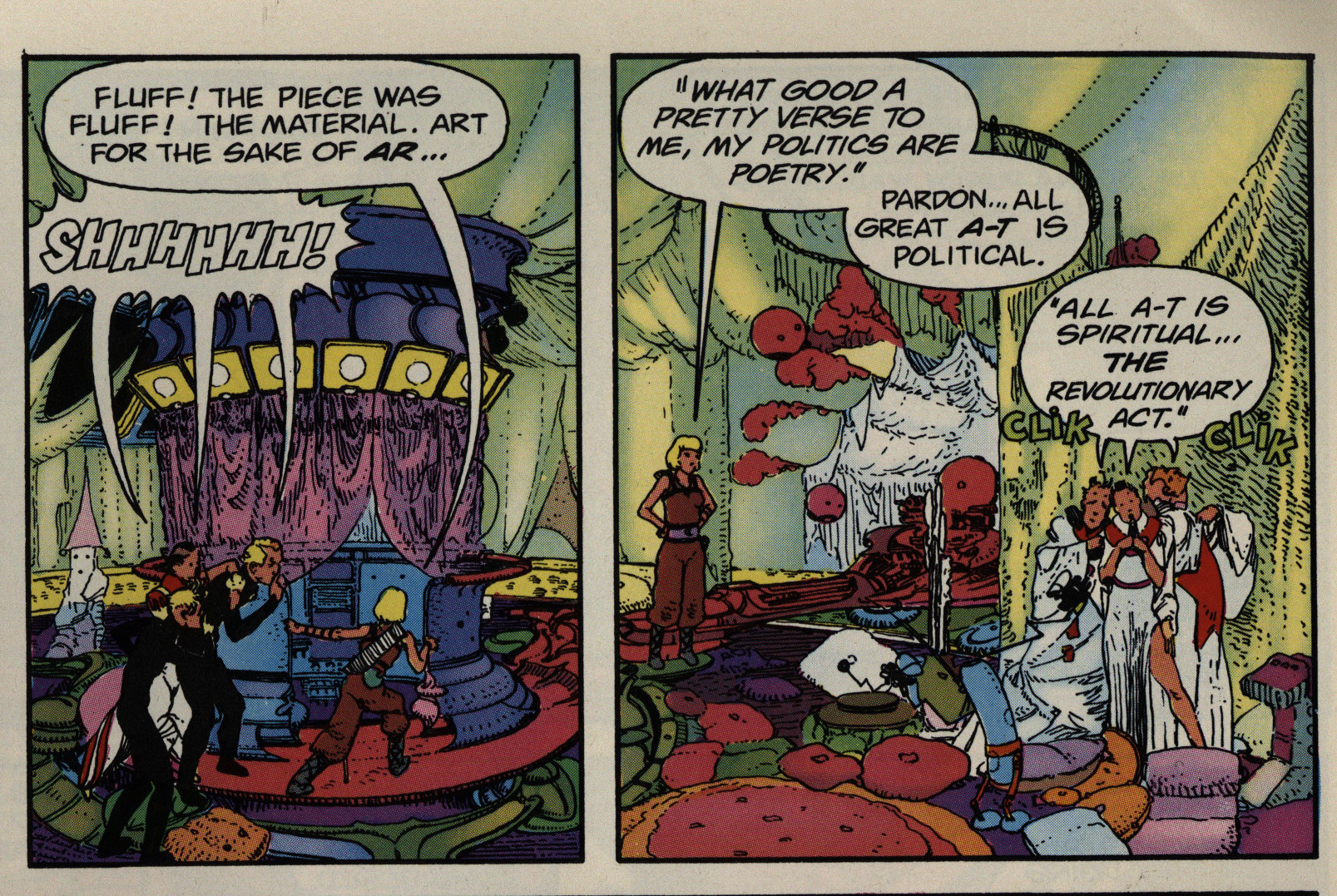
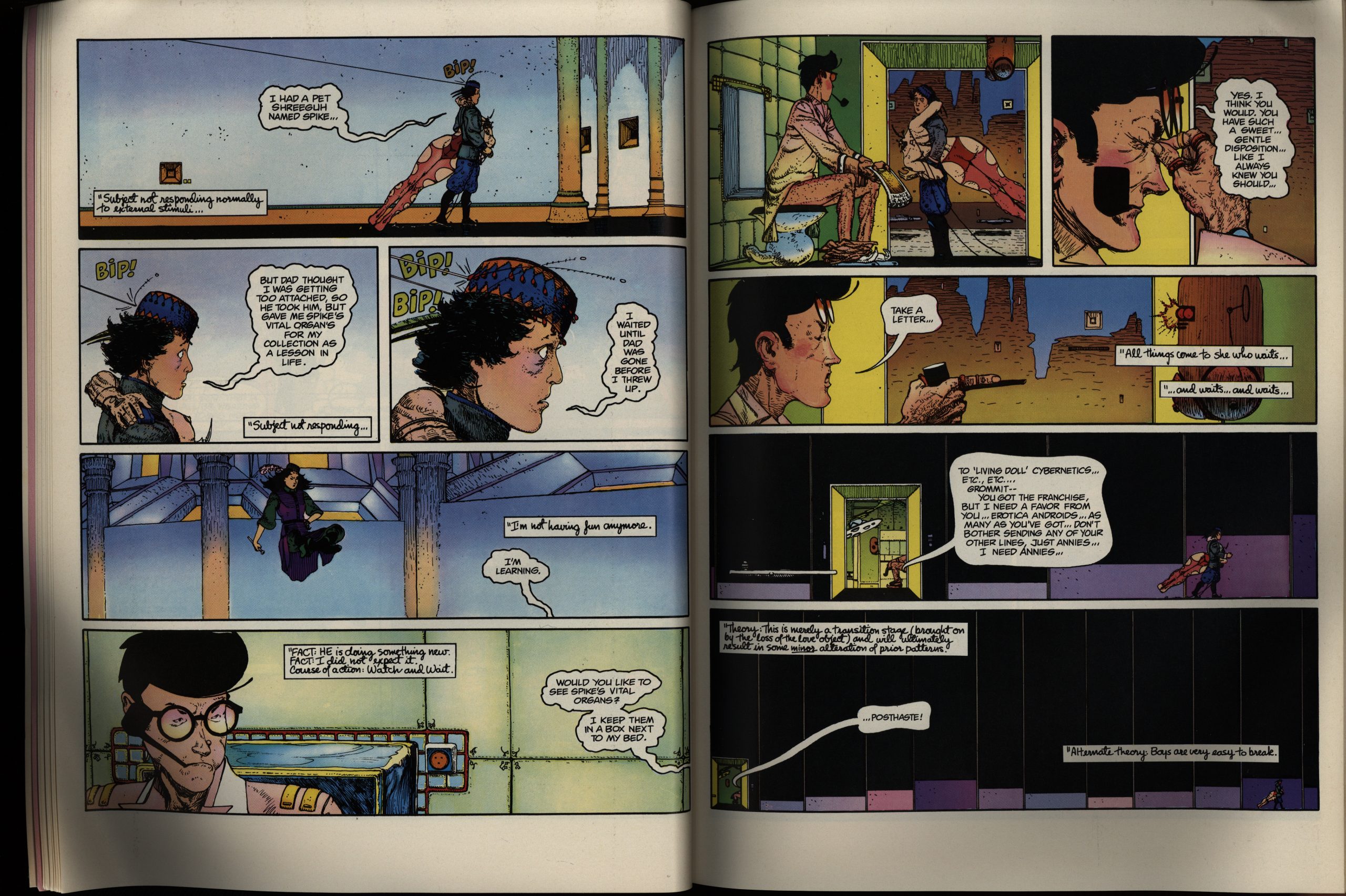
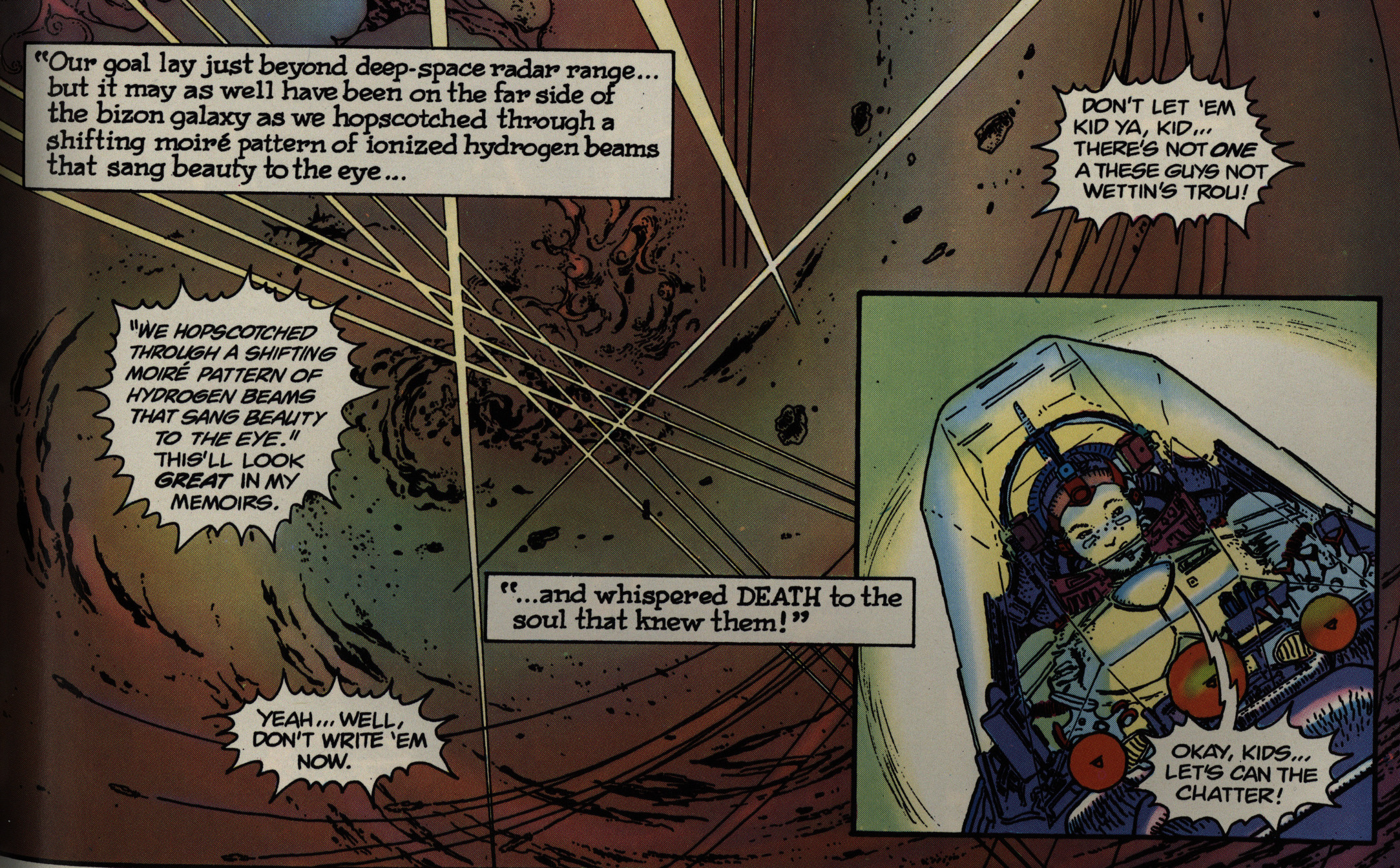
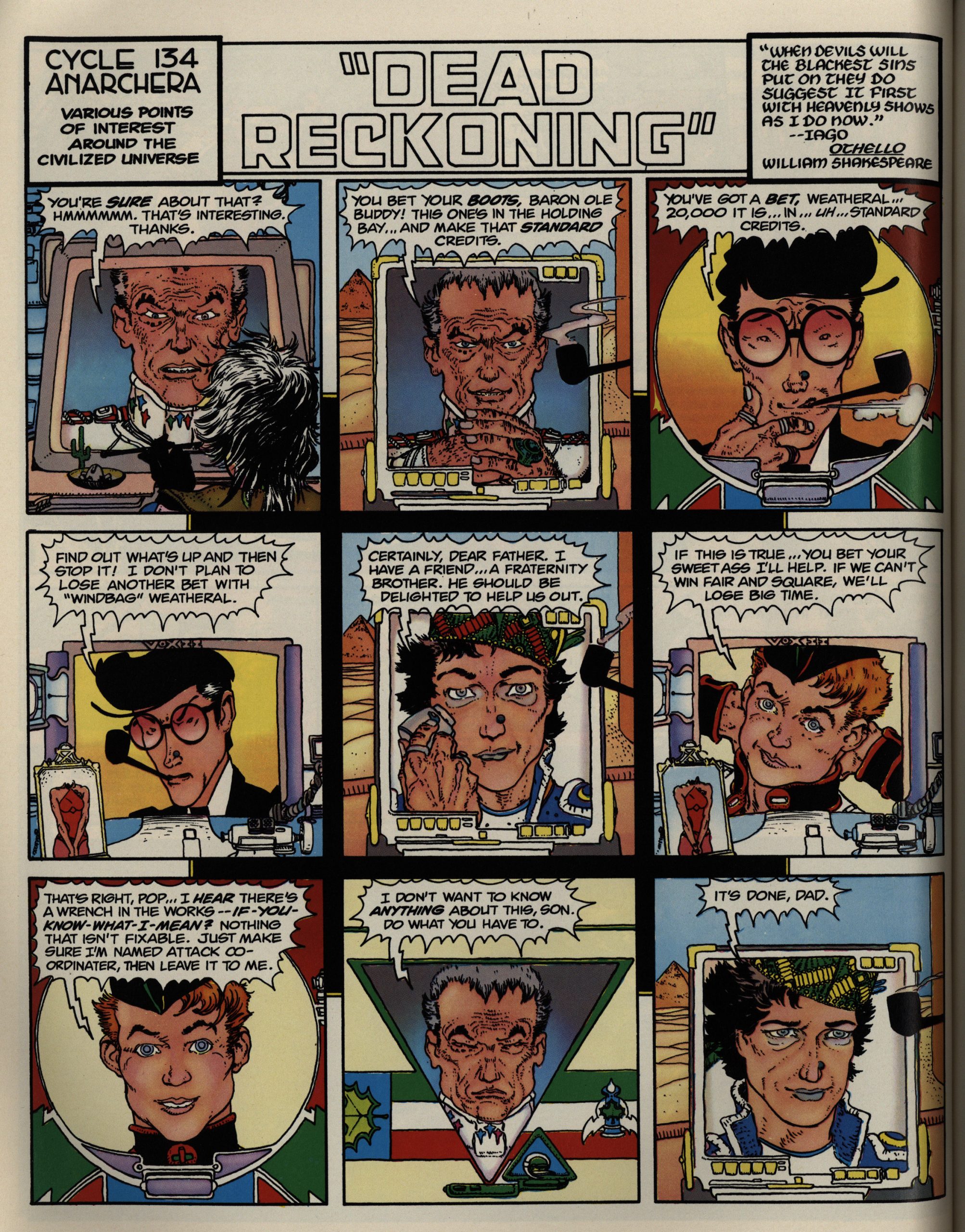

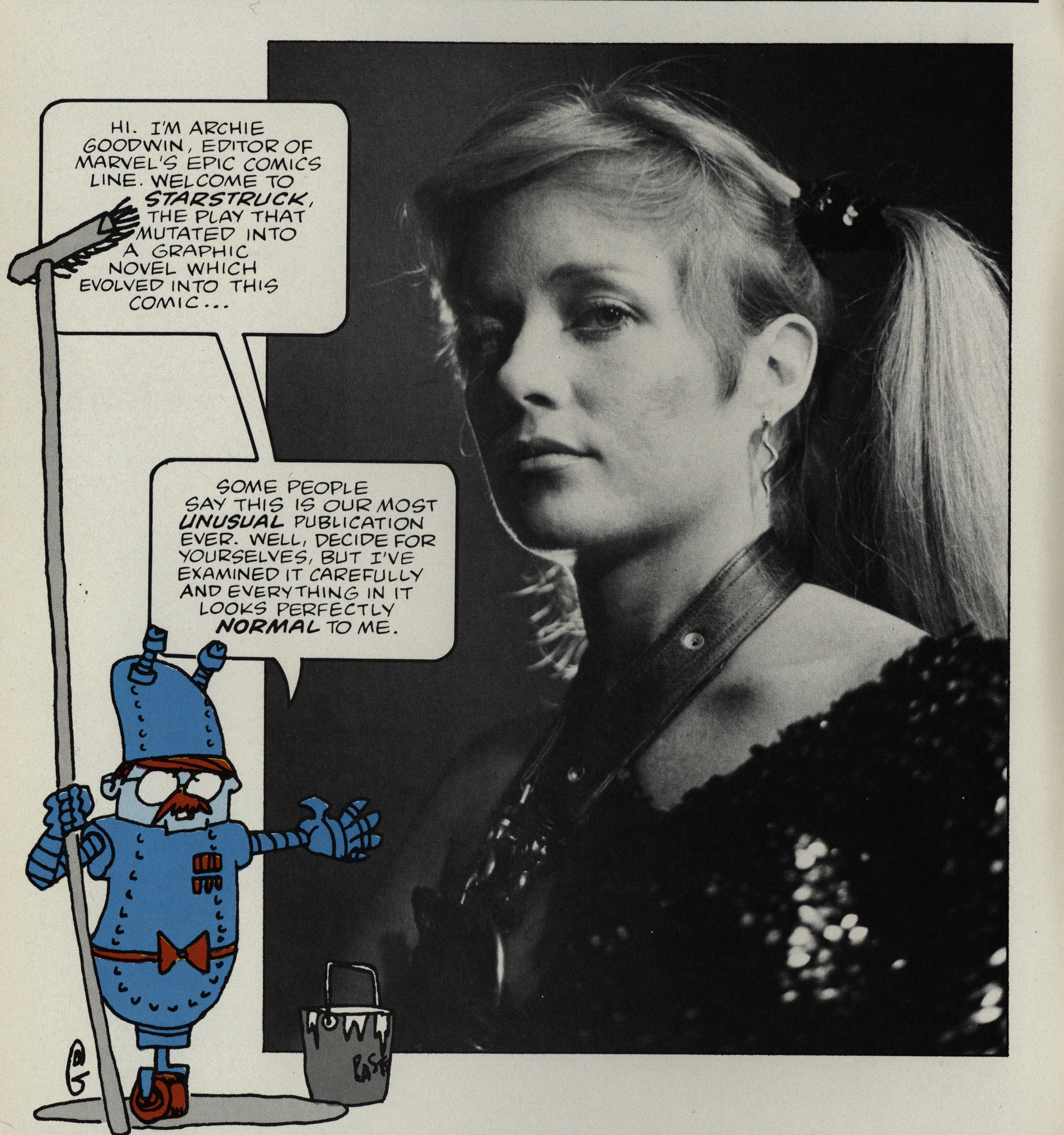
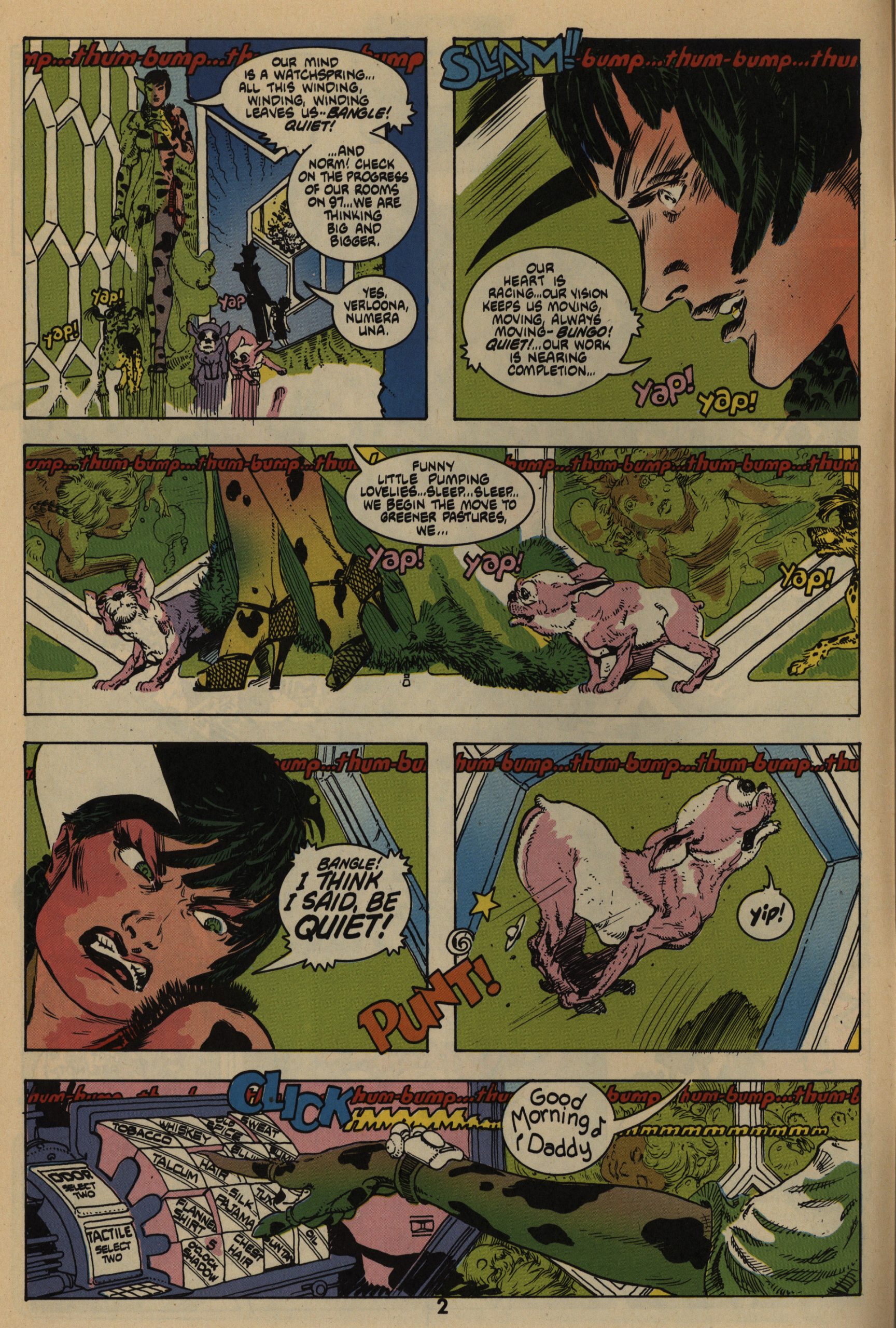
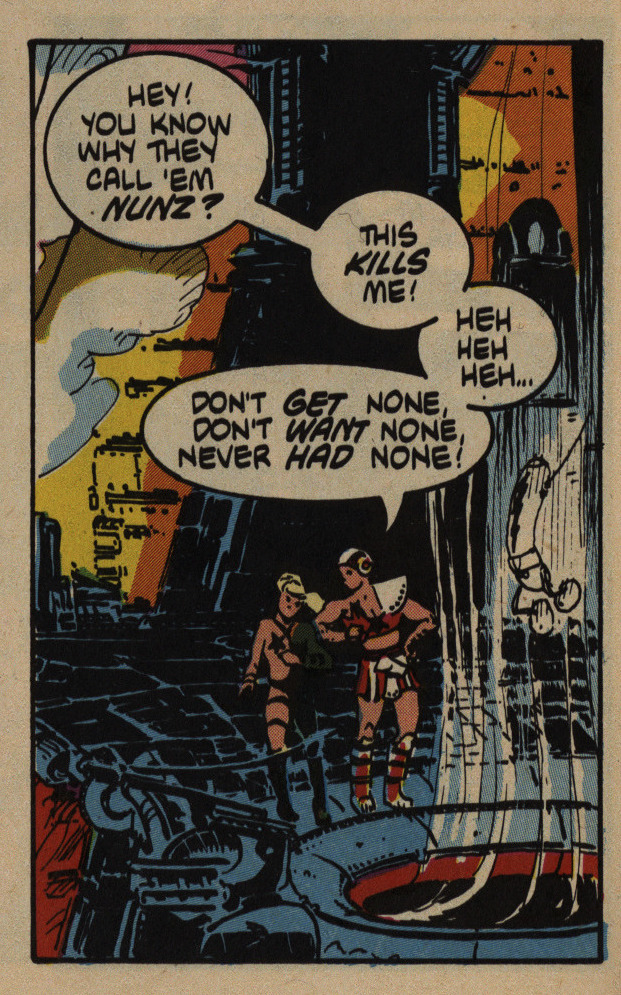
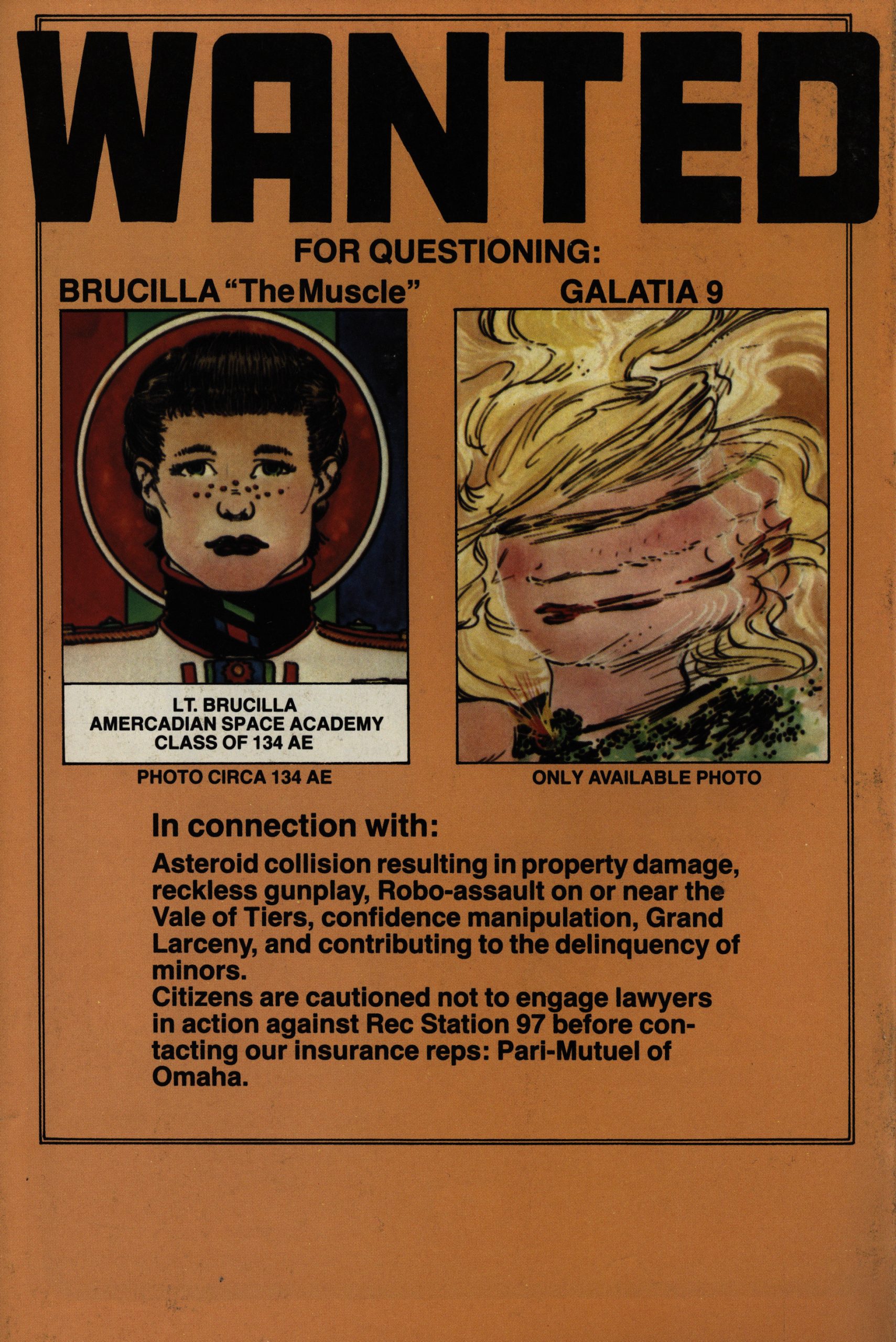
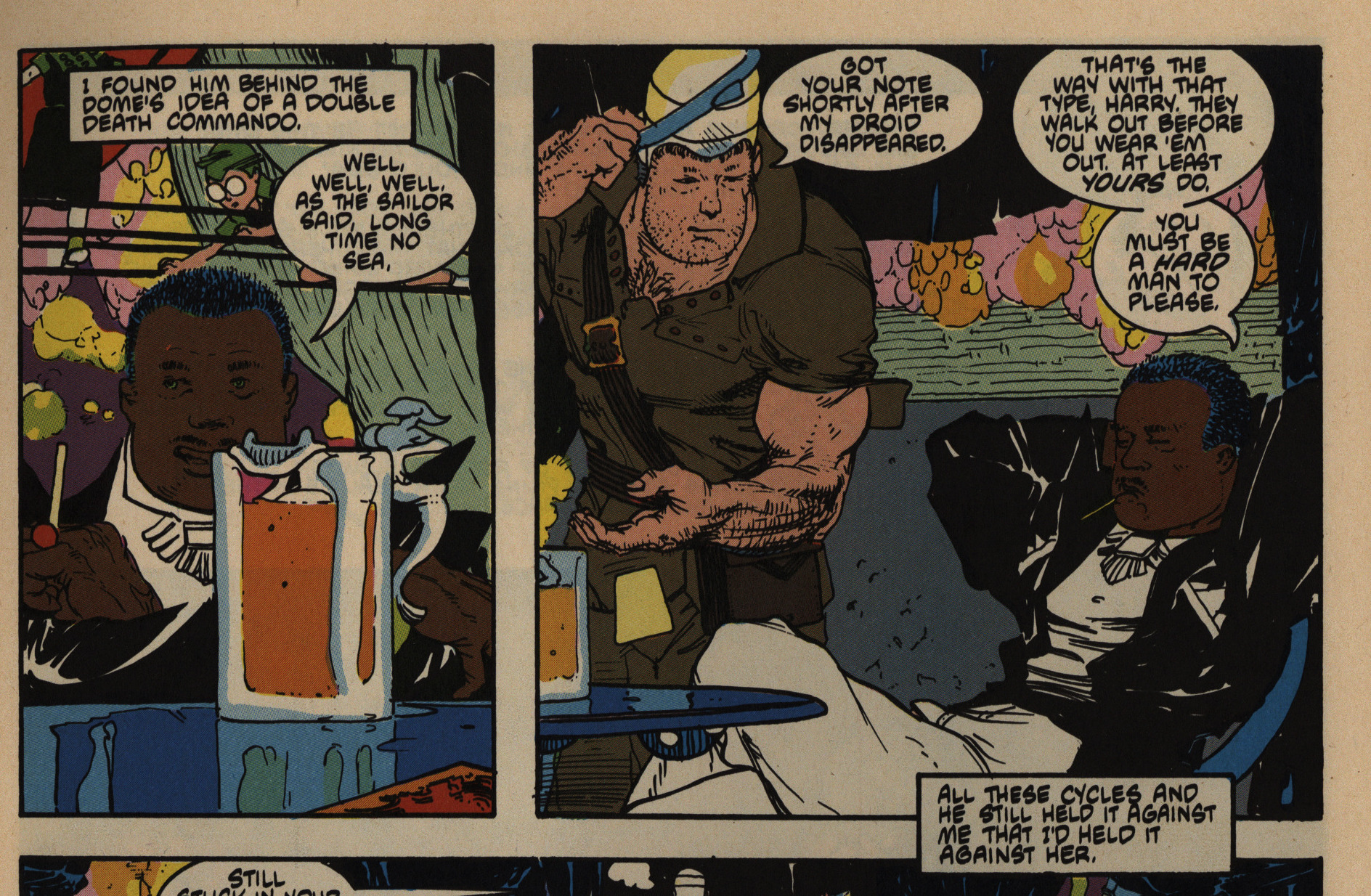
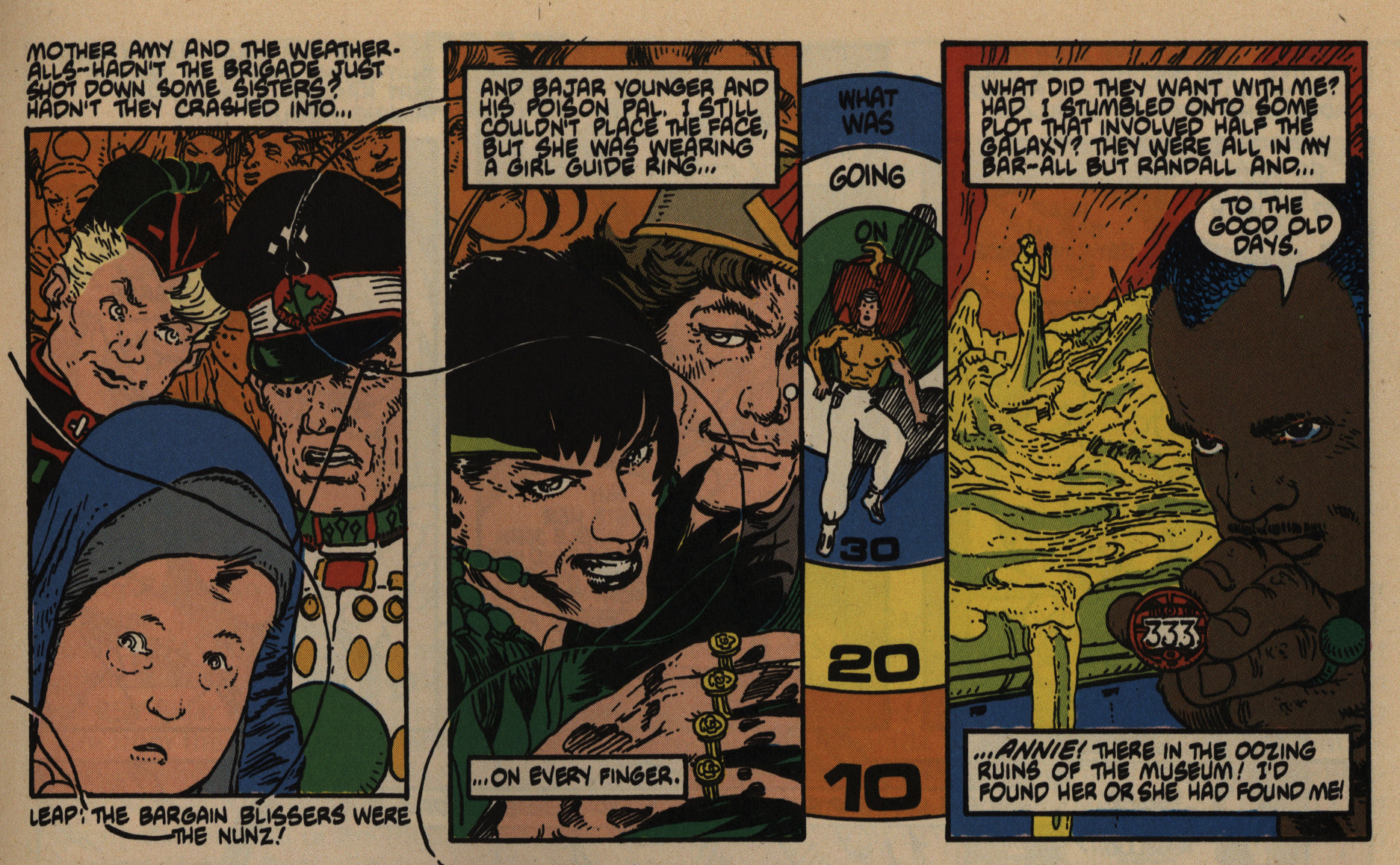
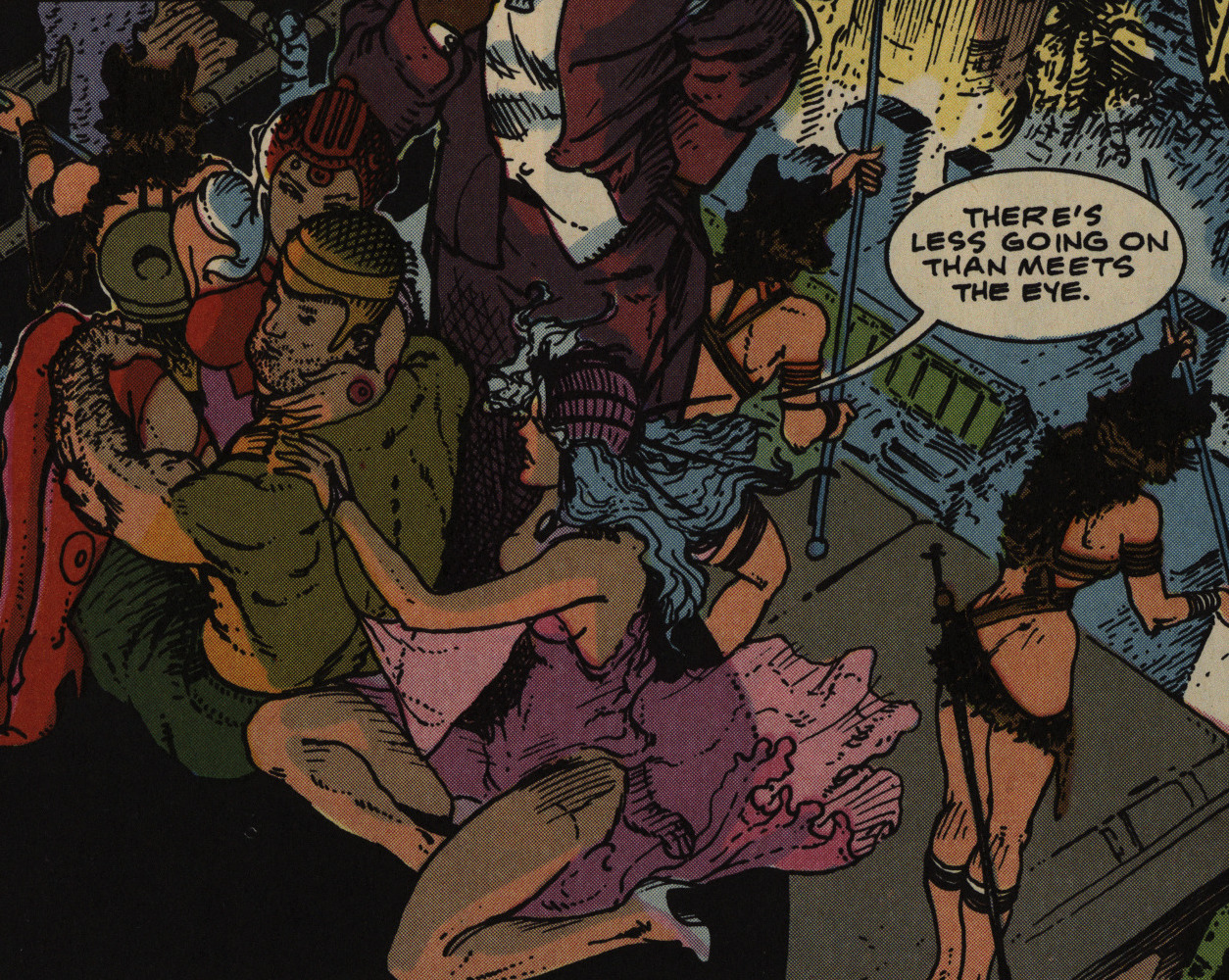

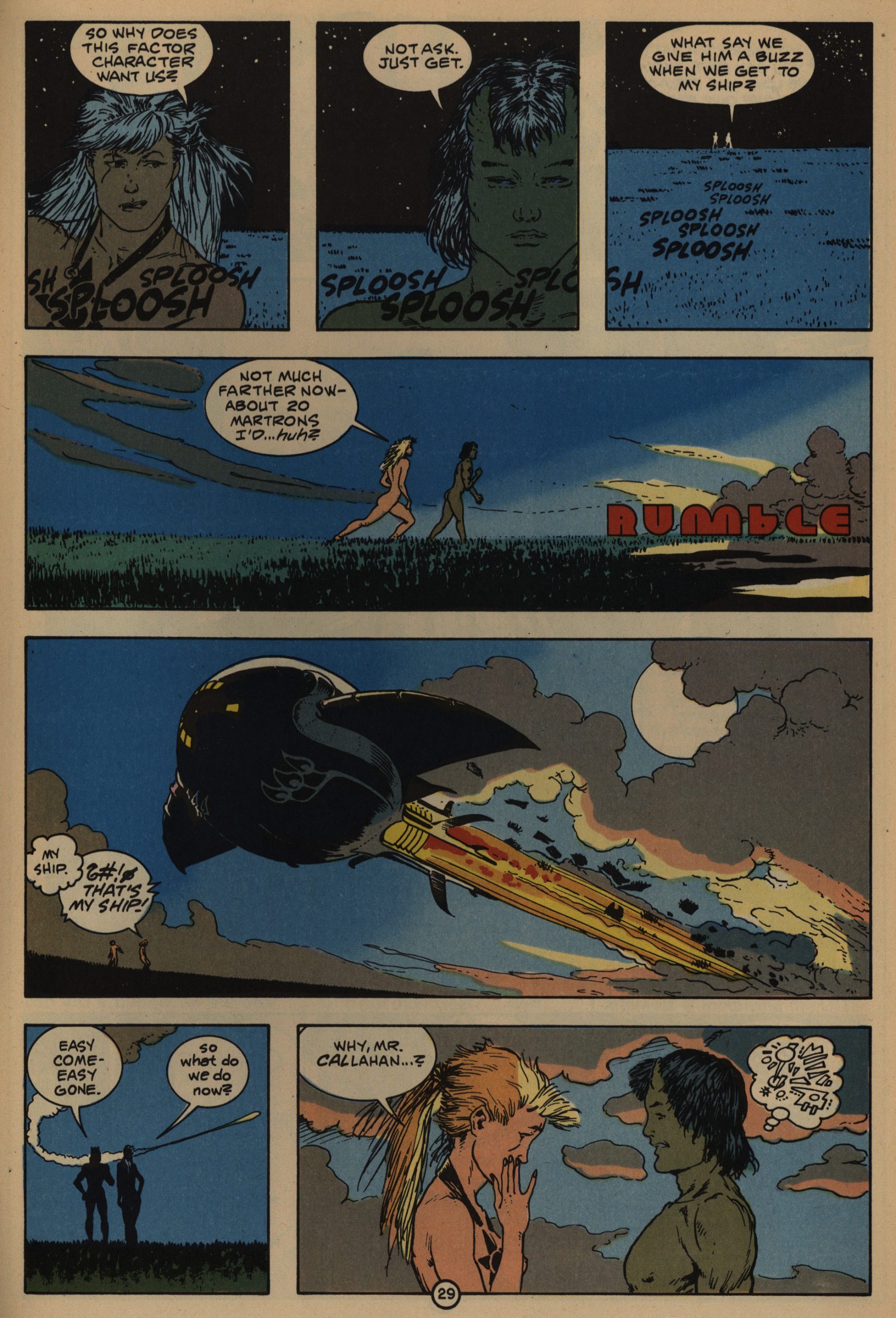
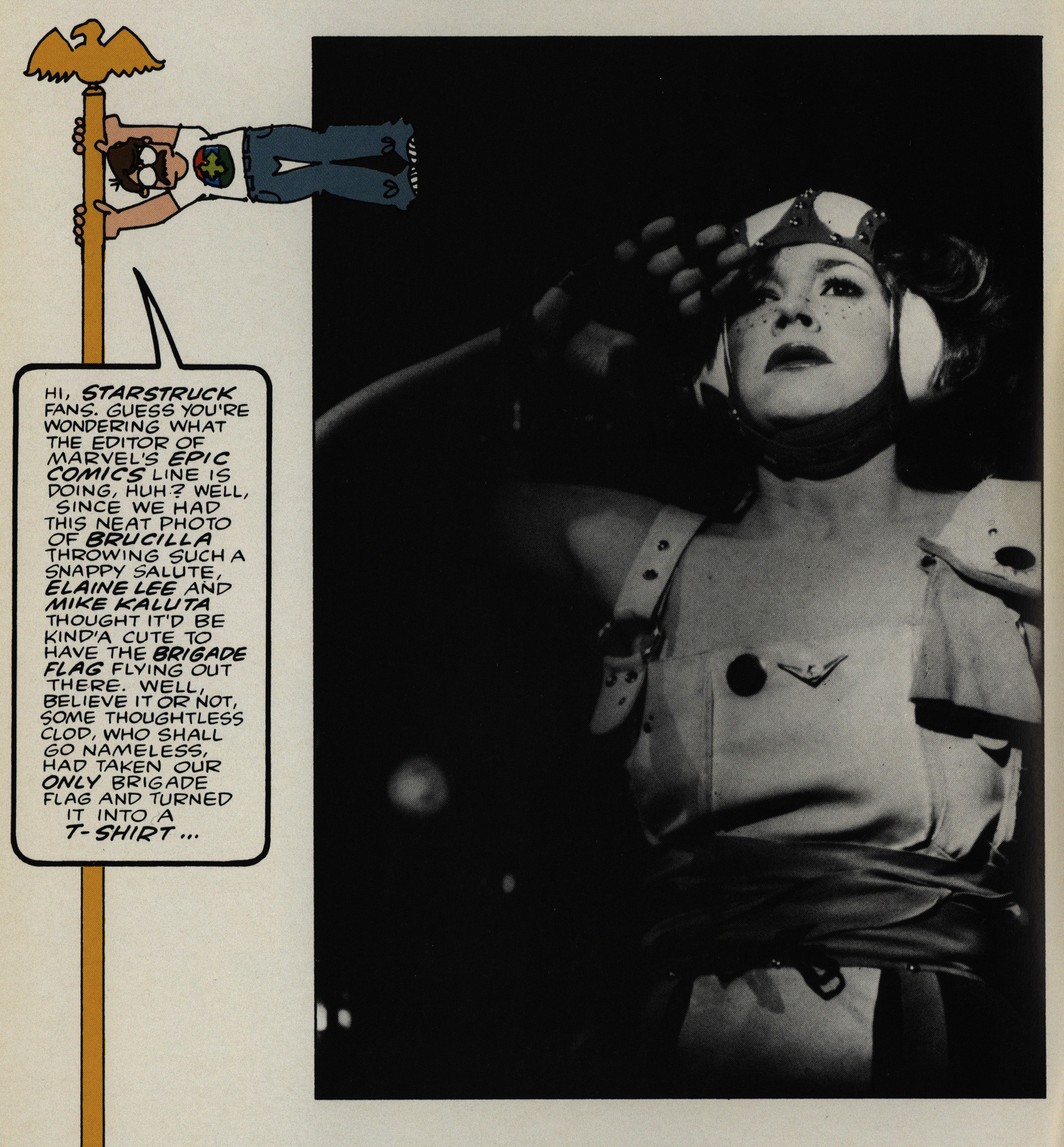
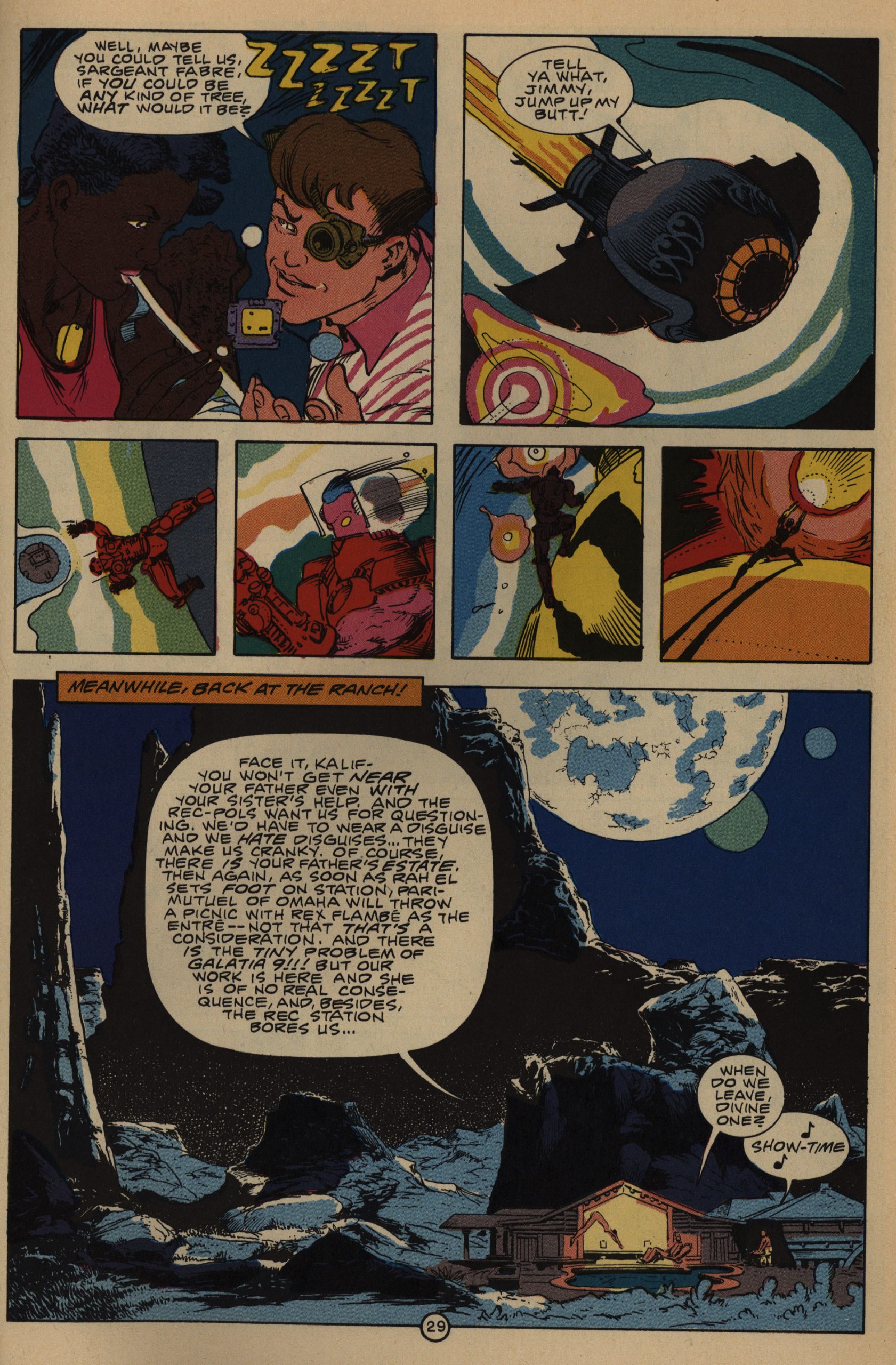
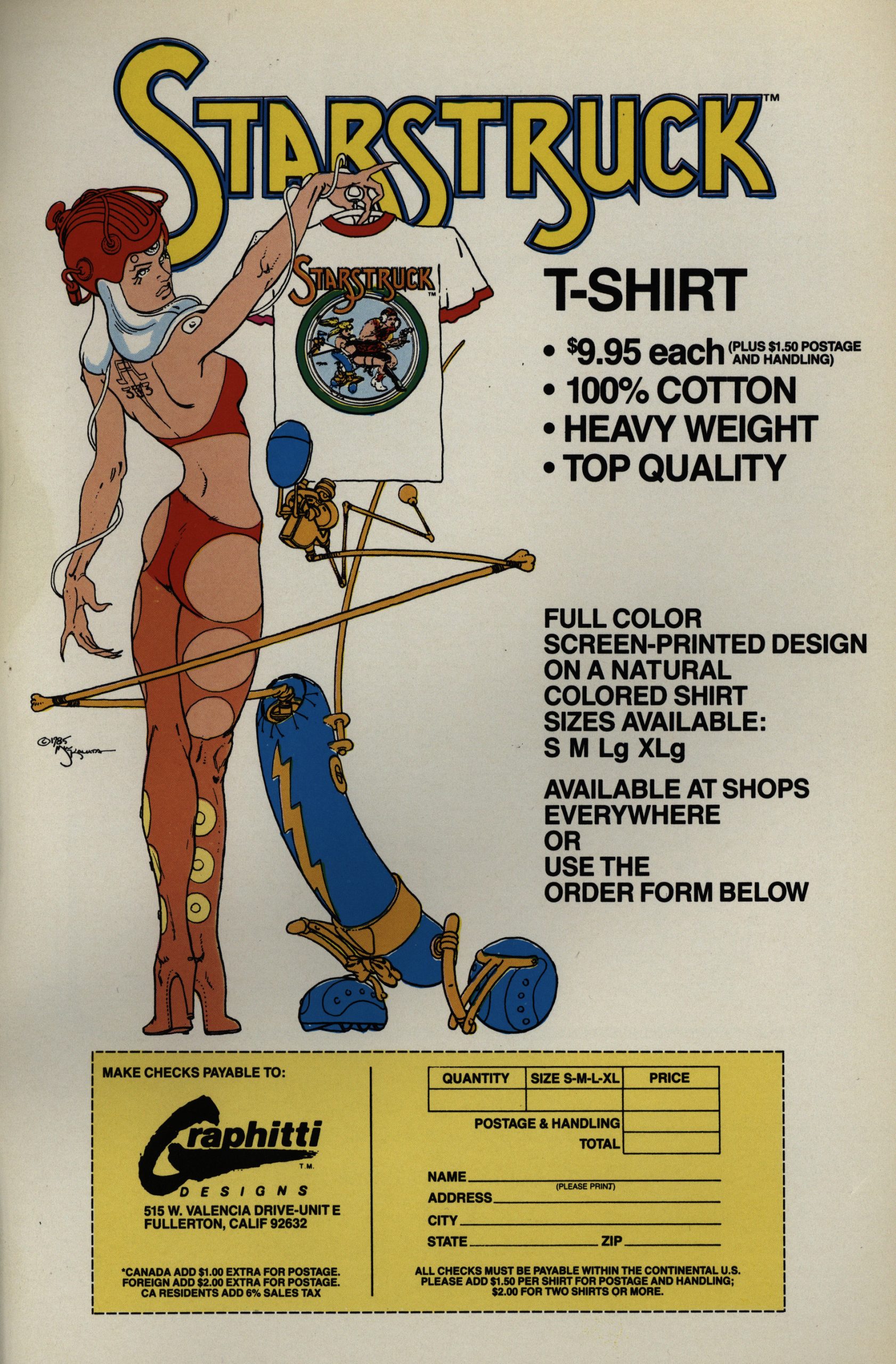
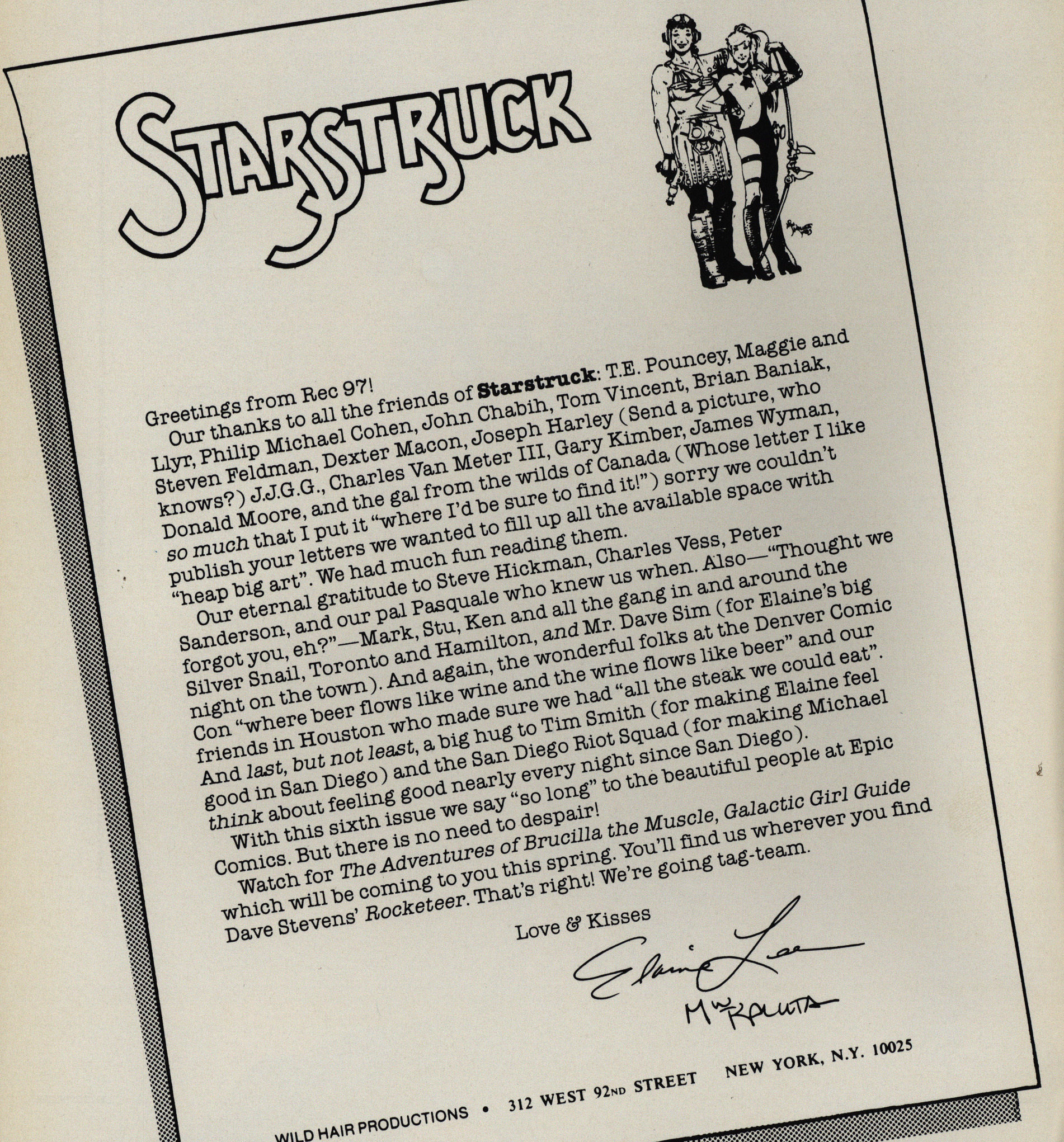
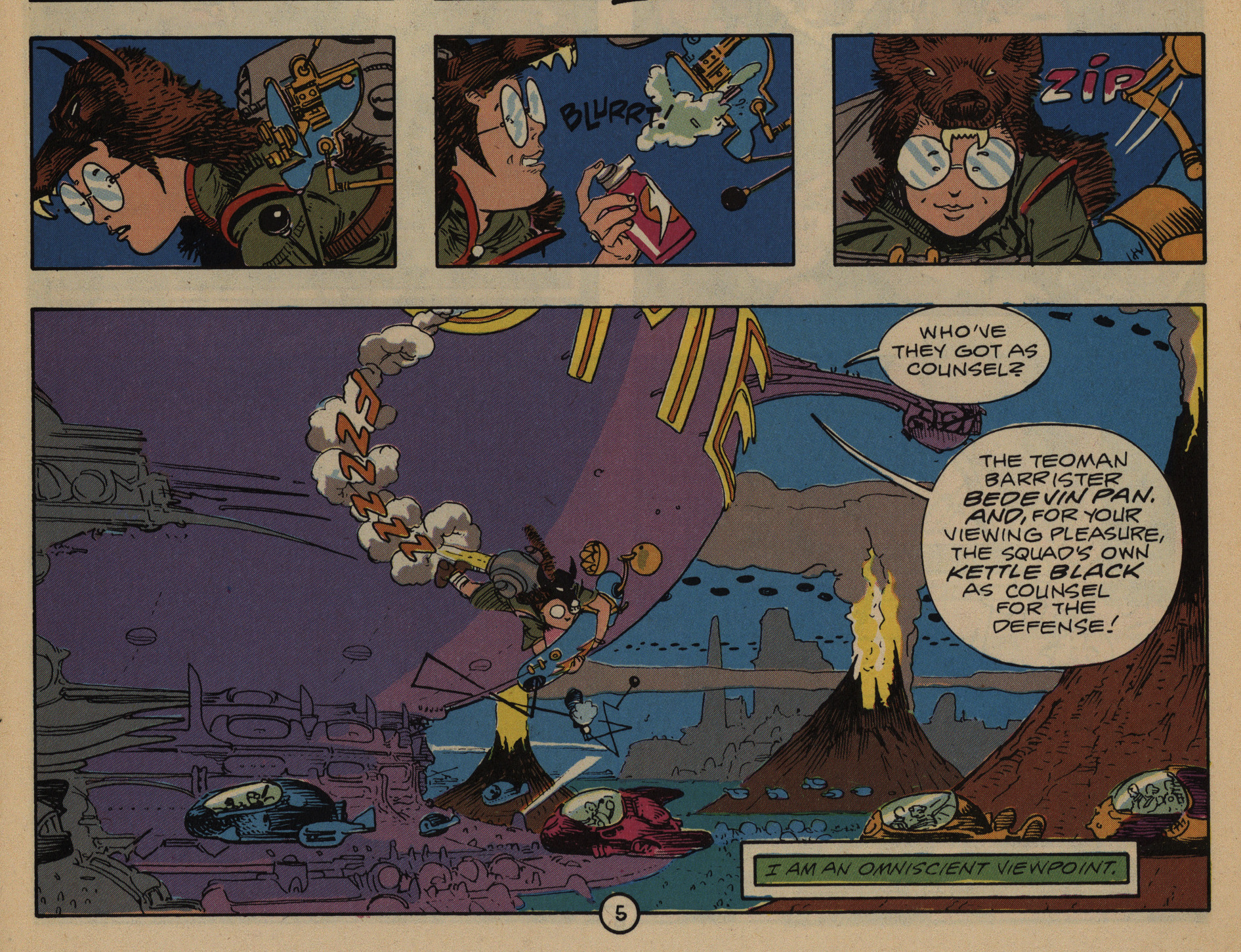
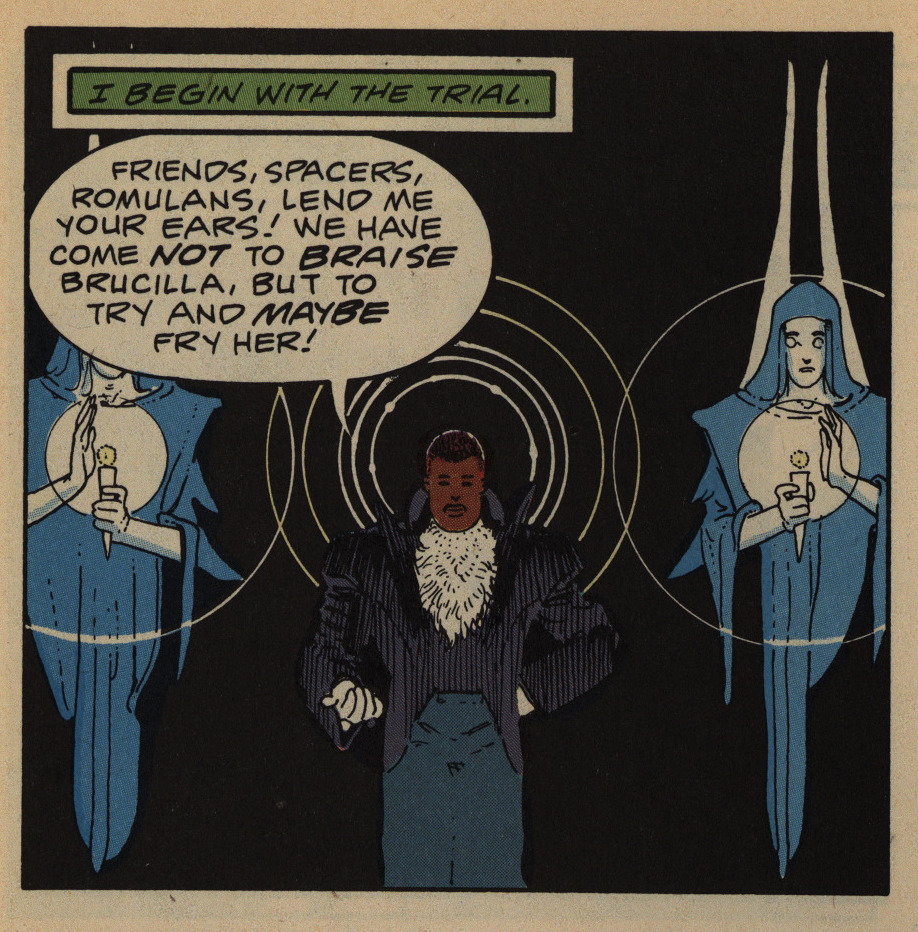
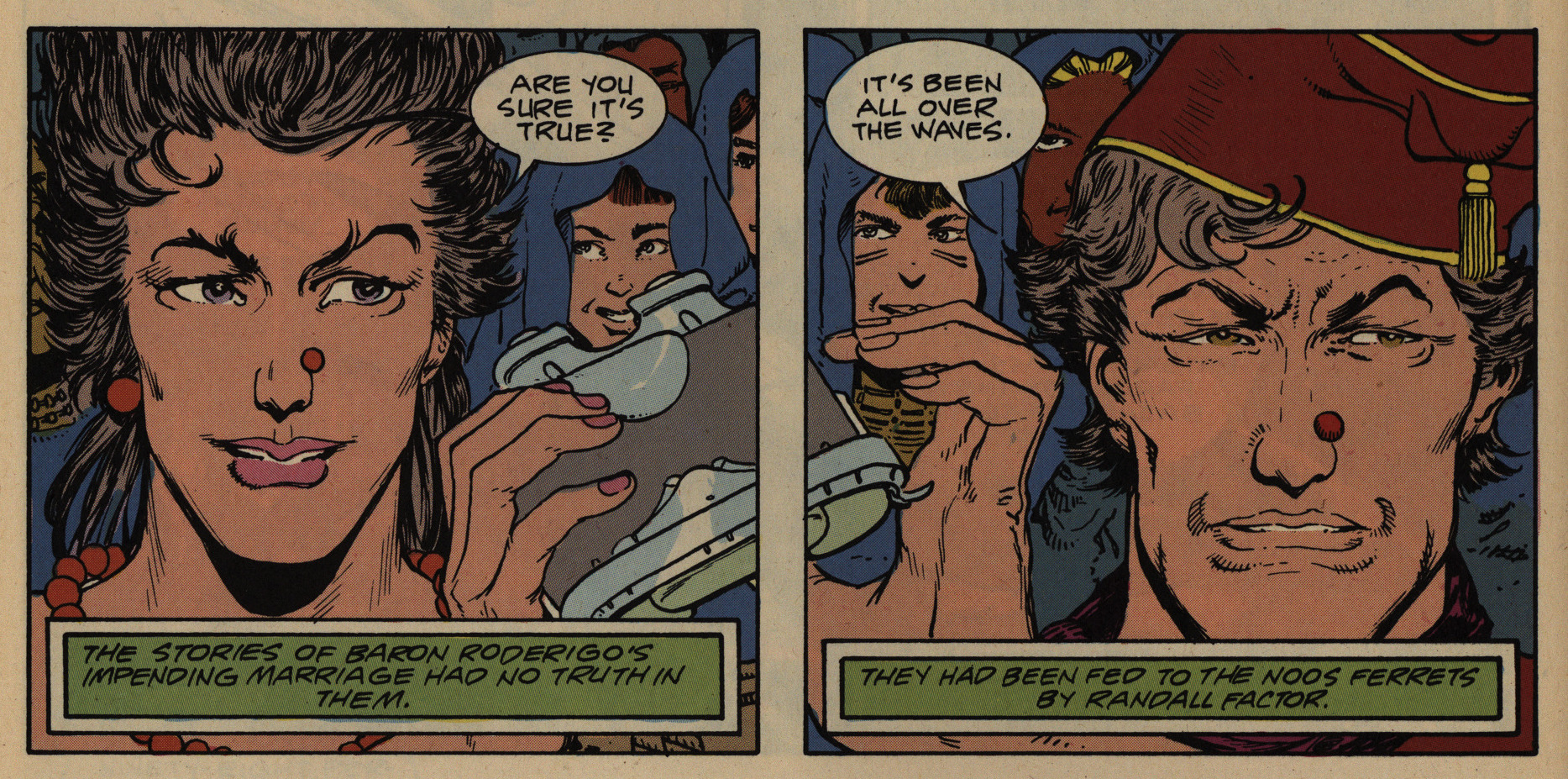
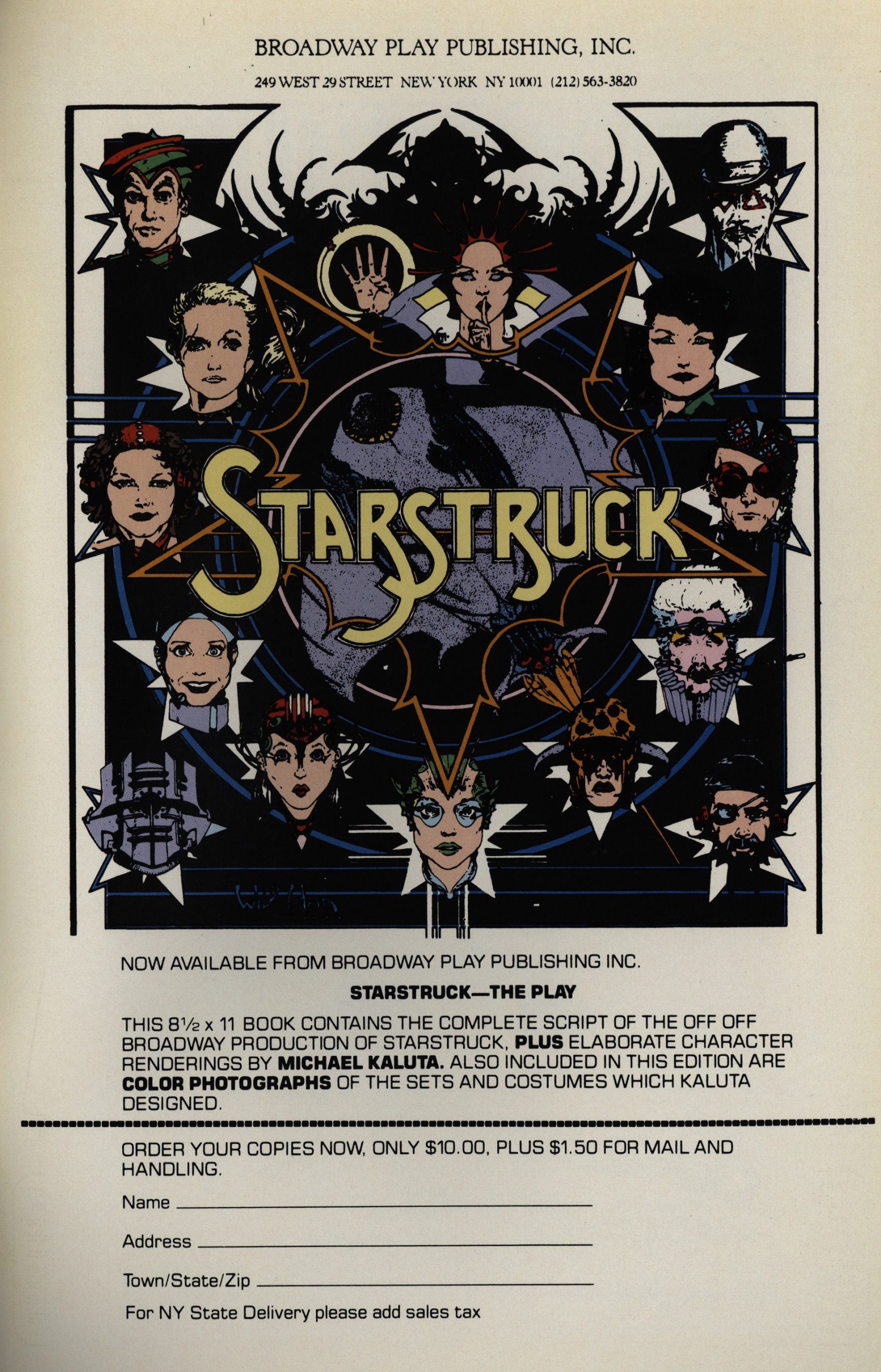
Just stumbled onto this! Thank you for your kind words. Glad to know folks are still appreciating the work. – Elaine